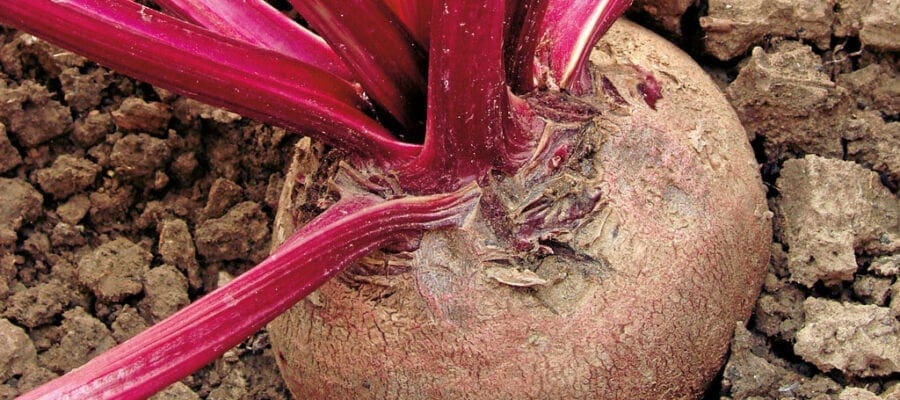Beetroot is a vegetable that you either love or hate but it is unique in its colouring and flavour. It is a more popular vegetable in Eastern Europe and the States where it is used more in hot dishes.
Here we are keen on pickling it as well as using it in salads. The best beetroot is definitely home-grown because you can lift small roots when they are at their tastiest and most tender. Beetroot in the supermarkets tends to be on the large side and require more cooking.
Beetroot calendar
Beetroot can be sown between March and July and harvested between June and October.

Varieties
There are different shapes and colours of beetroot –the most popular is the red, round beetroot or globe. These don’t require such a good, deep soil as the long-rooted types and mature quicker.
Always choose a bolt resistant variety if sowing early as the stress of cooler weather could encourage premature flowering. The Detroit varieties are ideal for the maincrop or mid-season sowings.
- ‘Boltardy’
A very popular red beetroot ideal for early sowings and not prone to bolting. - ‘Detroit 2’
Another popular variety that produces heavy yields. - ‘Burpees Golden’
An orange variety with yellow flesh. It is a mild and tender variety and some say has asuperior taste to the red types. The young leaves can be steamed or added to salad. - ‘Albino’
A white globe variety that does not ‘bleed’ if the flesh is cut. Does not store as well as the reds. - ‘Cylindra’
An oval-shaped beetroot that is excellent for winter storage. - ‘Cheltenham Green Top’
A popular long-rooted variety that needs a good deep soil that is not stony and is free-draining. Ideal for sandy soils.

Sowing & growing beetroot
Beetroot is sown in shallow seed drills about 21⁄2cm (1in) deep. The corky fruits are sown about 10cm (4in) apart but as two or more seedlings may appear at each sowing station, you remove the excess seedlings to leave one.
Leave about 30cm (12in) between rows of beetroot to allow room for growth. Ideally sow short rows of beetroot every month to get a succession of roots to harvest.
Growing on and harvesting beetroot
As the seedlings grow keep the ground moist and weed free. If the ground is allowed to dry out and then suddenly becomes wet it can cause splitting of the roots. Also periods of drought may lead to bolting (pre-maturerunning to flower and then seed).
When the roots are about golfball size or a little larger, they can be harvested. Remove alternate roots and allow the remaining ones to grow on.
Scrumptious recipes for your homegrown beetroot
More on beetroot
More grow guides
For more growing tips and guides, you should subscribe to Kitchen Garden – you’ll receive free seeds with every single issue too!





